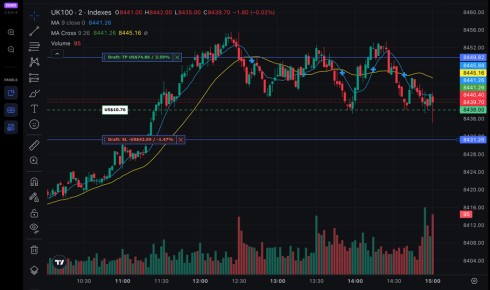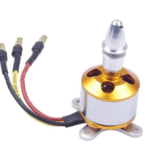The derivatives market is a very useful market in terms of liquidity, instruments for hedging, and trading. One of the major indicators under this is the Put Call Ratio (PCR) used by traders in the futures and options markets. The put call ratio measures market sentiments; it can be useful in making directional trades and with non-directional trading methodologies.
Today’s modern solutions provide aspiring traders with more paper trading platforms, which enable these traders to test their strategies before putting real capital at risk. Many bind to the latest mobile platforms, with several available option trading apps targeting different needs. Your knowledge in this area, combined with how the PCR works, can definitely enhance the effectiveness of decisions a trader makes in this segment of the derivatives.
What is the put call ratio?
It is as simple as that for this PCR: It is a ratio of the trading volume or open interest in put options opposed to call options on the market.
Put options effectively allow the buyer to sell an underlying asset at a pre-determined price within a given amount of time.
Call options give the buyer an option to purchase an underlying asset at a particular price within a given duration.
The following way is used to calculate the PCR:
Volume PCR = Put option volume ÷ Call option volume
Open Interest PCR = Put option open interest ÷ Call option open interest
A higher PCR generally indicates a stronger interest in puts than calls, while a lower PCR suggests greater interest in calls.
What Does Put Call Ratio Indicate?
The PCR is basically the measure of market sentiment.
High PCR-pushes traders into put-buying, bearish.
Low: However, buyers of calls are seen as more bullish.
A good number of traders use it for contrarian bets: The very high PCR indicates very pessimistic sentiment in the market and thus should be ripe for a reversal soon.
It is important to combine PCR with other tools like trend analysis, volume analysis, and price action analysis before decisions are made.
Futures and Options in Sentiment Analysis
PCR is one of the indicators that aid traders in aggrandizing the view to probable direction of price movement in the futures and options market. Futures contracts show a wider angle of market position but options data were traded according to market expectations about the movement, either upward or downward.
A trader’s analysis could include the following:
Change in price with a corresponding change in PCR on the futures contract.
Changes in PCR under volatile market conditions.
Sector level PCR-which would signify strength or weakness on the relative basis.
Such a multi-angle vision definitely would not let traders depend solely on PCR.
Using Paper Trading for PCR Analysis Strategies
The majority of new traders will not have the courage to apply such sentiment-based strategies in live markets due to the high risk involved. Paper trading free sites are useful in this aspect.
With paper trading, capital can be used for testing entering and exiting trades based on their analysis.
Conceptualizing different PCR variances in market phase.
Also, they can be able to follow their hypothetical gains and losses in reality before converting into real trading.
Tools for Tracking PCR
Several trading platforms, data providers, and options trading apps have PCR value tracking real-time information. Such tools bring potentialities for traders to use:
Filter PCR information based on index or individual stocks.
By the day’s highs and lows, where PCR was divergent.
View historical PCR values and their respective trends.
With the use of mobile PCR apps for options trading, people are able to easily follow along while on the road and respond to sentiment changes right away-as opposed to being tied to the desk.
Brokerage and Platforms Role
A broker who deals in futures and options would have to be most effective in order to have such features. Mostly traders take into account brokerage rates the broker offers and has a stable trading platform. Low commissions are also available for brokers who come up with commission plans for high-volume traders in derivatives.
At the same time, app-based trading, simplified because of having PCR information ready at hand, makes execution easier. What works best for an individual is determined highly by the trading method employed, the preferred instrument, and his budget.
Combining PCR With Technical and Fundamental Analysis
The best results are obtained when using PCR as a complementary analysis method:
Technical analysis- Chart patterns, moving averages, and volume trends will confirm or deny signals given by PCR.
Fundamental analysis- Earnings for companies, policy changes, and economic data will either confirm or contradict any particular PCR read.
Traders may want to proceed with caution if PCR shows bullishness but technical charts indicate resistance levels.
Risk Management While Using PCR
False signals from PCR might at times come from temporary volume or open interest spikes. The risk can be avoided as follows:
Trade only on confirmations and not alone on PCR.
Set stop-losses for loss limitation.
Keep an eye on the market as a whole.
This is particularly important in futures and options trading, given that leverage is a two-edged sword: it amplifies profit considerably while equally magnifying losses; hence, proper position sizing must constantly be observed.
Conclusion
The Put Call Ratio meaning lies in its ability to reflect trader sentiment through the balance of put and call activity. If put into perspective correctly, PCR could help a trader identify potential shifts in the market and is therefore best combined with other indicators and methods of analysis.
As far as technology goes, it renders paper-trading simulation free, while mobile-based option trading apps allow traders a way to sharpen their strategies before putting in their funds. Whether looking for intraday visible shifts in sentiment or using information on broader market perspectives, blending insights from the PCR with sound risk management and strategic execution will help traders steer their way through this ever-changing futures and options world.





